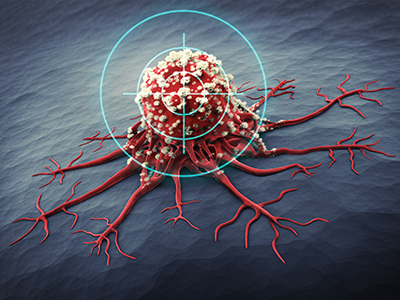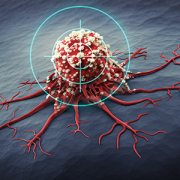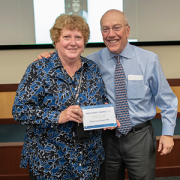Cancer Genetics Program growth: Q&A with Joyce Turner, M.S., C.G.C.

The Children’s National Cancer Genetics Program has witnessed a 57% increase in total number of patients seen in the past 4 years.
The Children’s National Cancer Genetics Program, established to identify individuals with a greater likelihood for certain types of cancer and provide early detection and treatment, has seen immense growth in the past few years. Joyce Turner, M.S., C.G.C., director of the Cancer Genetics Program, shares insights on the program and her vision for what’s next.
Q: How would you describe the recent growth of the program?
A: We’re extremely proud of the growth in the Cancer Genetics Program! Our program has witnessed a 57% increase in terms of the total number of patients seen (both new patients and patients seen for follow-up) in the past 4 years. A portion of this growth may be related to the COVID-19 pandemic as we were able to continue seeing patients in the comfort of their home. Our team has also expanded with the addition of a nurse coordinator in 2022.
Q: How does the work in this program benefit patients?
A: If we’re able to find a change, also known as a mutation, in a gene that explains a patient’s cancer diagnosis, we can support the care team with a better plan for how to screen the child moving forward. Since different genes can put patients at risk for specific types of cancers, knowing which gene mutation is present allows us to put a certain set of screening guidelines in place for long-term medical management.
Our goal with regular surveillance is to identify a tumor prior to becoming symptomatic when treatment is optimal for the patient and suffering is minimized. If we can identify a gene mutation in a patient, we can also test family members for the known gene change, so that they can benefit from screening as well if need be. After all, gene mutations can run in families. This also allows our team to share information with the patient’s family about the chance of recurrence in another child.
Q: What are you looking forward to in the future regarding advancements in the field of cancer genetics?
A: I am most looking forward to the newer technologies that will become the standard of care in the future.
Right now, we predominantly look at the ‘coding’ portions of our DNA, which are known as the exons. We are just beginning to learn about what lies within the introns, the genetic information between our exons, and we are finding that these regions are more important than we originally thought. RNA sequencing allows us to take a closer look at the effects of genetic changes within the introns. Right now, this technology is available on a limited basis from certain labs and for only a fraction of genes, but I see this becoming part of standard genetic testing in the near future.
Additionally, paired germline/somatic tumor testing (which looks for changes in cancer genes with which one is born and alterations in cancer genes within a tumor) has primarily been available in recent years on a research basis. However, the benefit of this technology is becoming more appreciated as it begins to move into mainstream practice. We have had to prove its feasibility and show that this type of testing can be performed in a timely manner. In doing so, this technology allows us to potentially determine the cause of a cancer, how to personalize one’s chemotherapeutic treatment based on molecular changes in the tumor and what we need to consider for screening purposes long-term. This type of genetic testing allows us to optimize overall patient treatment from the start. It’s an exciting time to be working in this field!








